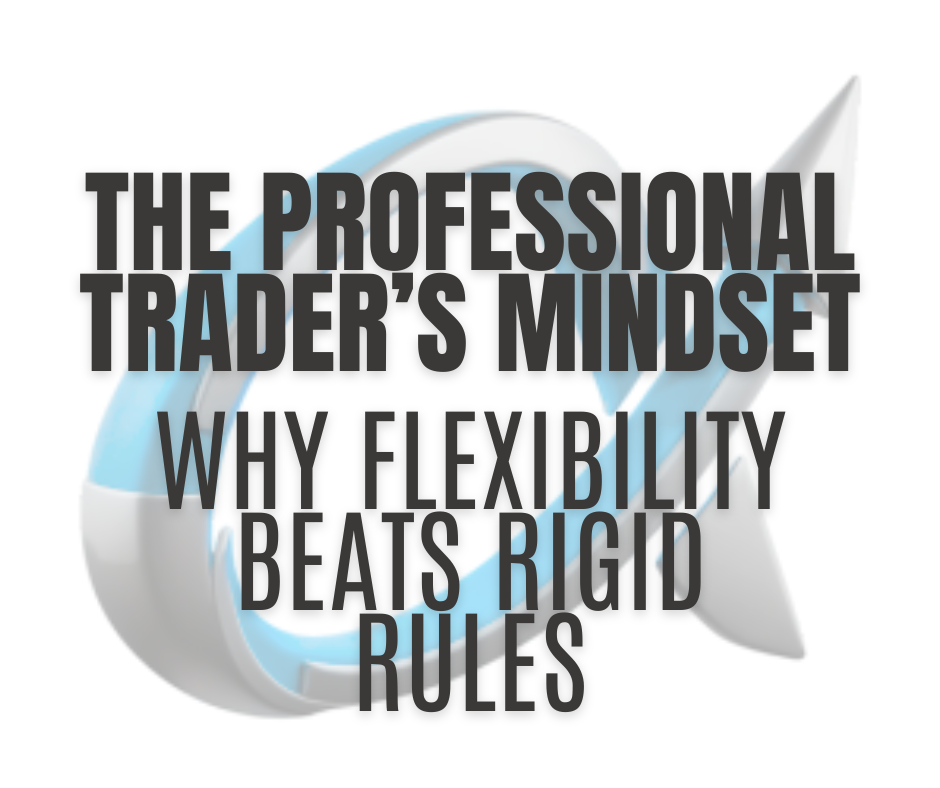How I Started Using Multiple Timeframes
By Brian Shannon, written with Kyna Kosling (@KayKlingson).
First published on July 29, 2025.
Listen to the article:
When I first came across intraday charts on a computer, I was fascinated.
The graphic quality was like the early computer game Pong: Clunky neon green bar charts, with no way of customizing them. Nonetheless, I could access intraday charts. How cool is that?!
Actually, I wasn’t allowed access to the computers at the brokerage firm where I worked. So, I’d have to wait for someone to leave the room, then sneak on their computer to see the intraday charts.
Later, when working as a stockbroker at Dain Bosworth, I’d dial up my 24K modem, then wait 35 seconds for an intraday chart to reveal itself. It was like waiting for a polaroid picture to develop and see whether I’d got a good shot, then go: “Wow, look at that! That’s how prices move!”
This was totally different from how I could previously see charts: Only printed, and only on the daily timeframe.
But I didn’t yet understand how the different timeframes fit together.
Back in 1993, I was still taking the intraday charts at face value.
I didn’t yet appreciate how they’re different pieces of the same puzzle. They allow me to view the same price action as the daily charts I was used to looking at, just magnified.
People are always asking me:
“What timeframe should I use?”
But why assume you must pick just one timeframe and stick with it? Would you ask Van Gogh about his favorite color to create his masterpieces?
Back in the early ‘90s, when I was working as a retail stockbroker, I was largely limited to the daily charts. And before I published Technical Analysis Using Multiple Timeframes in 2008, I wasn’t aware of anyone else talking about multiple timeframes. Every technical analysis book I’d read, for the most part, looked at just one timeframe.
Such limitations have long since been lifted.
Van Gogh couldn’t paint using just one color.
A true artist mixes different colors, knowing what ratio they need to create the desired hues. They also use multiple brushes, each serving a different purpose.
Similarly, different timeframes serve different purposes. To get the full message of the market, you shouldn’t limit yourself to just one timeframe.
My ‘aha’ moment was when I could finally see two timeframes simultaneously, physically side by side, rather than flip back and forth between the different timeframes:
Two timeframes for the same stock. Daily on the left and 30 – Minute on the right.
That was in 1994, when I began to fit the pieces together and started to talk about multiple-timeframe analysis.
When gauging the overall health of a stock, weave together different timeframes.
Recognition of how various timeframes interplay improves the quality of your analysis.
This improves your timing, which should increase your profitability.
But trading is an art—particularly when trading with multiple timeframes.
You need to understand:
- 1. The different purposes of each timeframe
- 2. How much emphasis to place on each timeframe
- 3. When to focus on which timeframe
Most mistakes I’ve seen around trading with multiple timeframes come down to not properly understanding at least one of these three points.
Here’s the thing:
Trading with multiple timeframes revolves around one core principle: Using different magnification levels for the same stock.
🔍️ More specifically, you lower your timeframe when you need more detail—for example, to be more precise with your entries and exits.
🌎️ And you look at a higher timeframe to, for example:
- • See the bigger picture (are you trading with or against the longer-term trend?)
- • Go back further in time, so you can identify more areas of potential supply or demand
The more complete your understanding of the overall story, told on multiple timeframes, the more accurate your price analysis.
This layered approach to timeframes has similarities with how traders can use AVWAP.
Multiple-timeframe analysis allows you to get into the heads of a wider range of participants, who each use different information to make decisions in the markets.
But while specific strategies differ, every participant has one of two simple goals in the market: To make money or avoid losing it. With that in mind, for better or worse, people are anchored to their entry price.
Someone making—or losing—money tends to act in predictable ways. (This makes it possible for more educated market participants to anticipate crowd behavior.)
And where many participants are emotionally attached to a particular price level—because it marks the start of the year, for example, or when significant news was released—that level becomes a good place for anchoring a VWAP.
Because an ⚓️VWAP tells you the truth about supply and demand from the anchor point.
That information identifies more levels of interest, helping you better anticipate the different scenarios that might unfold.
My second book, Maximum Trading Gains With Anchored VWAP, explains several different strategies for using AVWAP in detail—but you must always make the ideas your own.
This requires you to understand the principles behind them. Once you do, you can come up with your own strategies.
Trading with multiple timeframes has a similar logic: Once you understand the principles, you can make them your own.
In the next article, we’ll discuss six ways for you to incorporate multiple timeframes into your trading.
How do you make multiple timeframes work for you?
Share your experience, ask questions, or join the debate with other traders—continue the conversation with us on X!
Published by Alphatrends.net
https://alphatrends.net/archives/podcast/how-i-started-using-multiple-timeframes/





